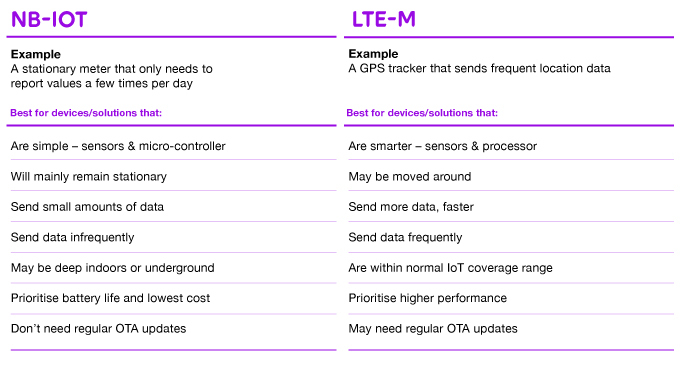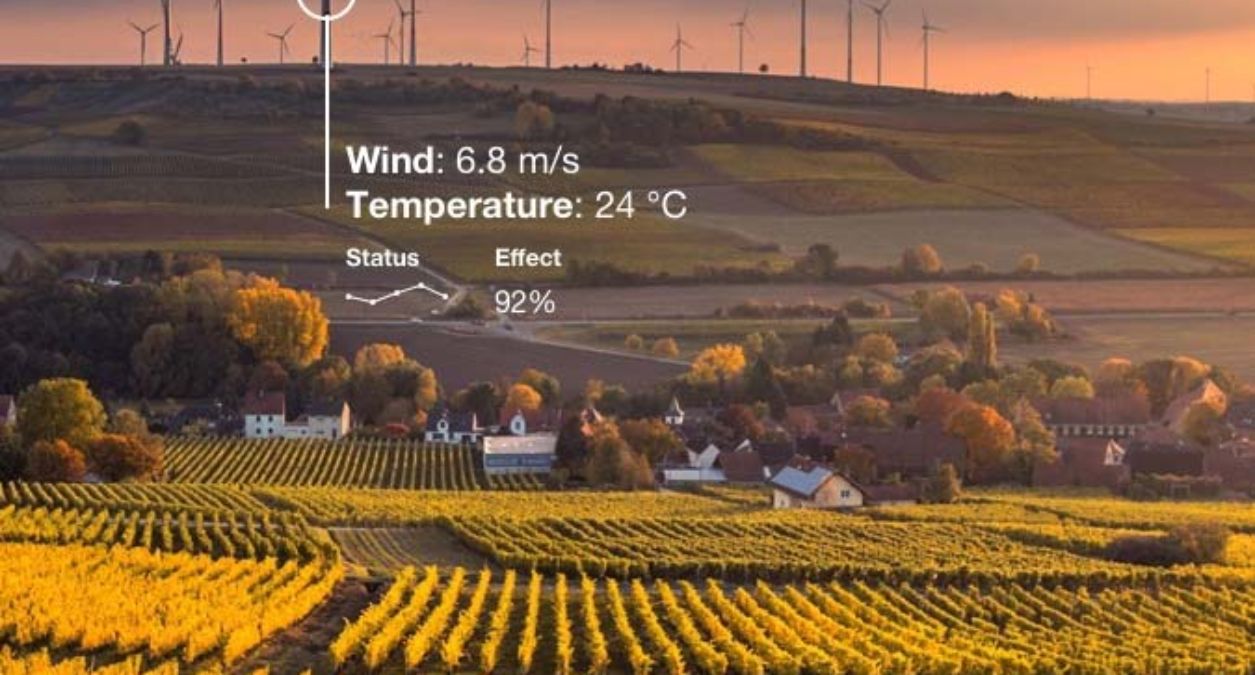What’s the fuss about cellular LPWA? Here’s what you need to know
Cellular Low Power Wide Area (LPWA) networks are sparking a new era for IoT. These latest technologies enable IoT solutions not possible before and deliver economies of scale for billions of devices – wherever they happen to be. The versatility and performance of cellular LPWA is attracting a lot of interest – just in 2019, there was a threefold increase in cellular LPWA connections to almost 100 million*. So, here’s what you need to know.
CELLULAR LPWA IN 30 SECONDS
As the name suggests, Low Power Wide Area combines minimal power consumption with extensive coverage. It’s specifically designed for IoT and applications that require lower data rates and where reaction time is not critical. LPWA supports solutions that require low total cost, long battery life and the ability to operate in remote locations.
LPWA’s efficiency comes from sending smaller amounts of data at defined intervals and quickly powering down the transmitter in between.
Telia offers the two cellular IoT network technologies included under the 5G standard: narrowband IoT (NB-IoT) and LTE-M. As standardised GSMA technologies, they are inherently more secure than alternative solutions.**
SO, WHAT’S IN IT FOR YOU?
Performance you can depend on
Secure, reliable networks in licensed spectrum to ensure no interference.
Cost effective
Low power consumption, low maintenance, simpler IoT modules.
Instant coverage everywhere
Ready-to-use widespread network coverage, even in remote areas.
Deep penetration
Devices can transmit from deep within buildings or underground.
Long battery life
With little or no maintenance needed.
An investment in the future
Supported and developed over the long term as part of the 5G standard.

NB-IOT OR LTE-M?
CHOOSE FOR YOUR NEEDS – OR DON’T CHOOSE AT ALL
Wondering why two different technologies have been standardised? NB-IoT and LTE-M have slightly different strengths. It all comes down to what you need your solution to do.
In short, we can say that NB-IoT is better suited to simpler, stationary applications, while LTE-M is more versatile and supports greater mobility.
But sometimes a combination might be best. That’s why many modules are designed to support both technologies.
Mobility
One of the main differences between the two technologies is that LTE-M is designed for mobility. Devices can move at high speed without fear of dropping data sessions. Coverage is very good, in the normal IoT range.
NB-IoT is better suited to static devices. Once established on the network, the device saves its settings and will not recalibrate unless forced to do so. This enables longer battery life.
Evolution & Security
The over-the-air (OTA) update capabilities and data capacity of LTE-M make it the better choice if your application is likely to develop over time. This is ideal where security is a priority: being able to update your devices quickly is essential when working with critical data. OTA updates also let you deploy fast and make timely enhancements. NB-IoT is better suited to applications that will remain unchanged over a longer period.
Latency
If responsiveness is a factor, LTE-M has the upper hand. Its data capabilities allow for faster and more sustained response times – necessary for applications such as remote control or if human interaction is required. NB-IoT is geared to sending smaller amounts of data less frequently. Transmitting larger amounts of data would be slow and lead to excessive power consumption.
Power
Both technologies are very efficient when it comes to power, though NB-IoT has a slight advantage if used as intended. Economical performance depends on the transmitter powering down quickly and staying off most of the time. LTE-M tends to be active more frequently and for a little longer.
 Faster to market with largest IoT network in the Nordics
Faster to market with largest IoT network in the Nordics
If you need a long-term platform for secure, cost-effective IoT solutions, cellular LPWA should be on your radar. Telia is currently the only operator to offer both NB-IoT and LTE-M on a seamless harmonised network. And because cellular LPWA is a direct-to-network technology, you don’t need to build your own network. Instead, you can leverage the most extensive network infrastructure in the Nordics and Baltics***.
Our harmonised infrastructure includes consistent PSM and eDRX features, as well as Enhanced Coverage and HLCOM. We can assure the same performance in all our regions, making IoT deployment over multiple markets a smooth experience.
But above all this, we are dedicated to supporting you and making sure you get the business success you need from your IoT solution – now and into the future.
Ready to reach further? Let’s talk.
FIVE CLEAR WINS
| There are many scenarios where LPWA can be an excellent choice. But if any of these five apply to your project, you should be evaluating NB-IoT and LTE-M. | |
| 1. You need full mobility and instant connectivity – instead of building your own network | |
| 2. Your use case will evolve and you need the possibility of OTA updates. | |
| 3. You will have many devices spread over a wide area and need a network with extensive reach. | |
| 4. You will deploy in an area with a high density of connected devices and need a robust network with dedicated spectrum. | |
| 5. Security is critical – you will need built-in mobile security, dedicated spectrum and OTA updates. | |
References
* Ericsson: IoT connections outlook June 2020
** GSMA
*** LTE-M available in the Nordics. NB-IoT available in the Nordics and Baltics
Cookie notification
Cookies allow us to optimize your use of our website. We also use third-parties cookies for advertising and analytics. Please read our Cookie Policy for more information.

